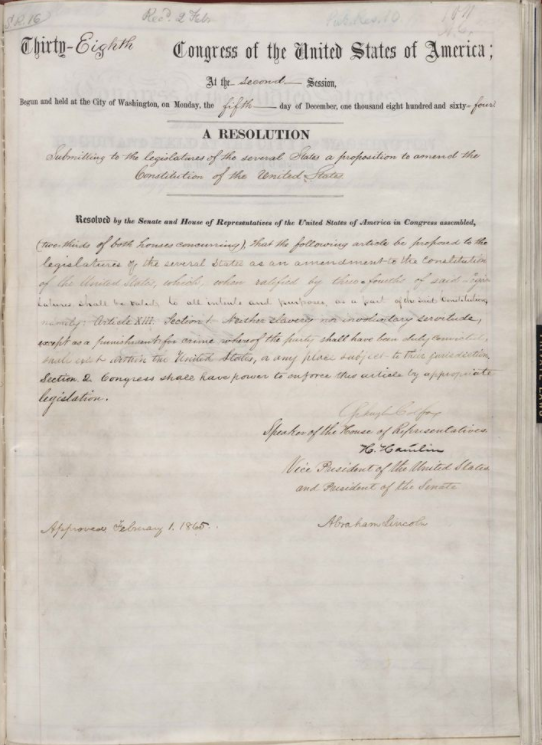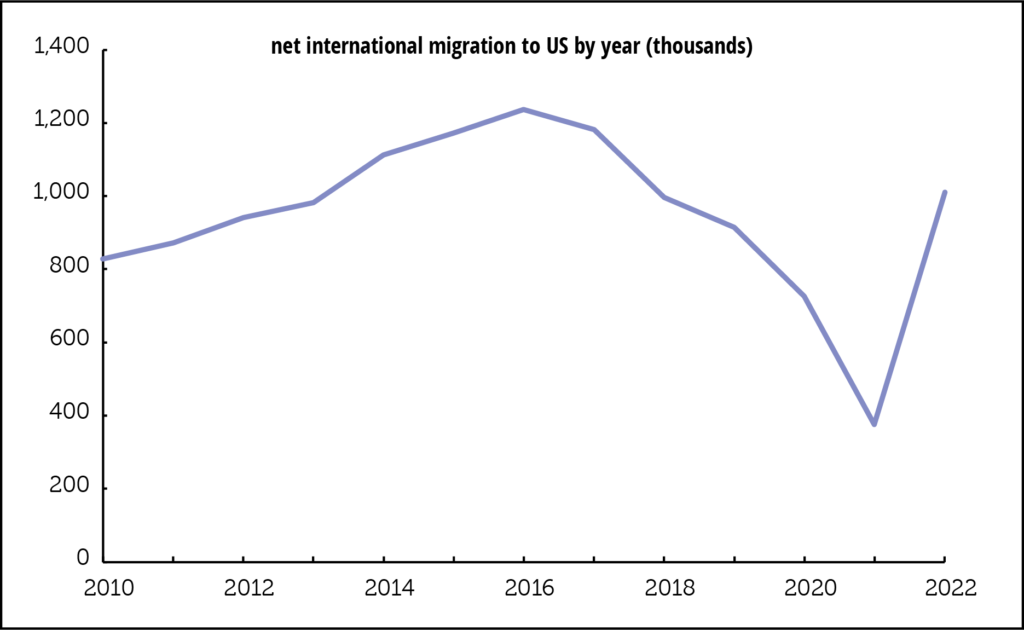NCAs: Theory, meet data
Federal Trade Commission Chair Lina Khan has an opinion piece in the New York Times covering the FTC’s proposal to forbid the use of noncompete agreements (NCAs). We want to highlight new research presented in one of the papers she cites, “The Labor Market Effects of Legal Restrictions on Worker Mobility,” by Duke’s Matthew Johnson, Ohio State’s Kurt Lavetti, and Michael Lipsitz of the FTC. The paper makes many points, and references work on the rise of superstar firms, on domestic outsourcing, and on the weakening of unions as possible pressures causing the “downward acceleration” of labor’s share of income. Then they present their new work on gauging the effects of levels of NCA enforcement.
On the bright side, NCA could increase firms’ investment in training, knowledge that might increase workers’ productivity and earnings, but research suggests a darker pattern of depressed earnings instead. When we have written about NCAs pressure on wages and start-up formation in the past, some readers have suggested they are not a problem as they are not enforced. That is true, however, research suggests they are nonetheless threatening to workers who may not understand that, especially low-wage workers with lower educational attainment.
There are also cases of lawsuits involving stiff fines for low-wage violators, and the use of NCAs is growing. A recent study found that somewhere between 28 and 47% of private-sector workers are subject to NCAs. The authors referenced a 2014 “high-quality” study that put the share at 18%, noting the disparity may be explained by the passage of time.
Understanding how NCAs affect labor markets has proved “elusive,” and lack of comprehensive panel data has limited research on enforceability, leaving other potential but unobserved causes lurking. Johnson, Lavetti, and Lipsitz’s paper constructs a new panel that employs “within state changes” to isolate the effects of enforceability. They make the interesting point that the “vast majority” of changes in enforceability law come through judicial decisions, and suggest that’s a consequence of the importance of precedent in law in the courts. To them, judges are “more constrained than legislators in allowing economic or political trends to affect decisions.” They, tactfully, point out that was helpful in the design of their research.
Their research found that although, in their estimates, about 17% to 47% of the workforce is bound by NCAs, the effects extend beyond those workers. Negative externalities on wages including reduction of labor market churn, thinning labor markets, and higher recruitment costs. In studying markets that cross a state border, they found changes in enforceability in one state affected workers in the adjoining state. They cite the large body of literature showing that employed workers’ wages rise when their outside options improve, and that wages are more closely aligned with the minimum unemployment rate over the course of one’s job spell than to the rate when the spell began. Although they find this holds true on average, in states employing strictly enforceable NCAs the minimum unemployment rate has “essentially no effect” on the workers’ current wages, while the rate at the beginning of employment has a much stronger effect. In states with low enforceability, the effect of the longer run unemployment rate is “even more pronounced,” the start rate less.
They show NCAs extend inequality. Women are less likely to violate terms of their NCAs and more hesitate to commute, and strict enforceability reduces earnings of non-white and female workers by twice the reduction of white male workers’ wages.
They conclude that strict enforcement of NCAs ”fundamentally changes” wage negotiations, moving them from a model of implicit contracts and costless mobility, to one of implicit contracts and costly mobility. They find that by shutting down on-the-job wage growth, enforced NCAs deprive workers of a primary way to increase their incomes. By regressing the labor share of income at the state level using NCA enforceability, they find a jump from the 10th to the 90th enforcement percentile is associated with a 2.3pp decline in labor’s share of income. And that 2.3pp difference is about one-third of labor share’s decline over the last 80 years.
The FTA proposed rule is up for public comment, and Khan invites us, especially those directly involved, to weigh in to make sure their work is based in reality, not theory.
There is a lot of scholarship on this topic. Chair Khan doesn’t mention the link to former slave-holders following the Civil War—a tie shared with tipped employment—but that work is available two-clicks into the footnotes. Ayesha Bell Hardaway’s Paradox of the Right to Contract is a classic.
Instead dismissing NCAs because they are often not enforced, it might be more useful to wonder how our society came to tolerate repurposing a covenant designed to protect intellectual property to preventing a minimum wage worker from seeking higher wages at a different establishment. The personal damage caused by NCAs falls disproportionately on minorities and women, but the overall damage to productivity, new business formation, disruption and innovation, affects us all.
Philippa Dunne & Doug Henwood








Does a starry sky have protections?
Based on potential orbital debris and light pollution, The GAO recently published recommendations that the FCC review and document whether licensing of mega-constellation satellites “normally does not have significant effects on the environment,” establish review process and a time frame for its “categorical exclusion” of such licensing, and make public the factors FCC considers in determining “extraordinary circumstances.” They also report that FCC agreed with their recommendations.
Although a debate over whether people have a right to a dark night sky hasn’t been on the radar screen for all but a tiny and recent sliver of human history, in early 2020 then Vanderbilt law student Ramon J. Ryan argued in The Fault of Our Stars that the FCC should back away from its categorical exclusion of satellites from environmental review, and complete an environmental assessment of direct, indirect and cumulative effects of commonly used satellite components on the environment. Noting that programs like Starlink have the potential to provide internet to billions of people lacking access, such a process would create standards in the commercial-satellite industry that would comply with Congress’s mandate that the federal government proactively consider environmental impacts of its actions, without denying possible positive effects on economic stability and access. He cites NASA’s environmental review of routine payloads in their missions as a model.
In 2019 about 2,200 satellites were orbiting the planet, a number Ryan suggested should increase five-fold in the next few years. Scientific American (SA) now reports that SpaceX alone has been granted permission to launch 12,000 in the next years, with plans for another 30,000, and almost all brighter than anything currently in orbit.
Then a FCC spokesman rejected Ryan’s argument, but other lawyers interviewed for the SA piece believe there is ample precedent, including a successful questioning by environmental groups of the National Institute of Health’s approval of recombinant DNA bacteria without proper review, and the US Army Corps approving licenses for gambling ships in the Mississippi. Considerations mandated under the National Environmental Policy Act include direct and indirect effects on “aesthetic, historic, and cultural” considerations, and Sarah Bordelon, an environmental lawyer, believes that Ryan’s argument that the night sky falls into those categories is “not a crazy argument.” Good to know! Bordelon’s argument includes astronomers’ inability to do their jobs, which would give them standing, and she believes if the FCC missed a significant issue, they would likely lose a legal challenge.
In what the SA calls a “belated attempt” to solve astronomers’ concerns, SpaceX has tried a light-reducing coating for some satellites, but it’s not clear that is working. A court battle would last for years, and there could be an injunction prohibiting new launches. Please remember, it’s our money and this is important information on balancing the possibilities of mega rockets—like obviating the need to fold the James Webb Space Telescope up so it would fit into a rocket—with our love of our night sky.
And anyone reading through a startup’s prospectus that includes such things as a use of mercury rejected by NASA fifty years ago, please take heed.
Philippa Dunne & Doug Henwood